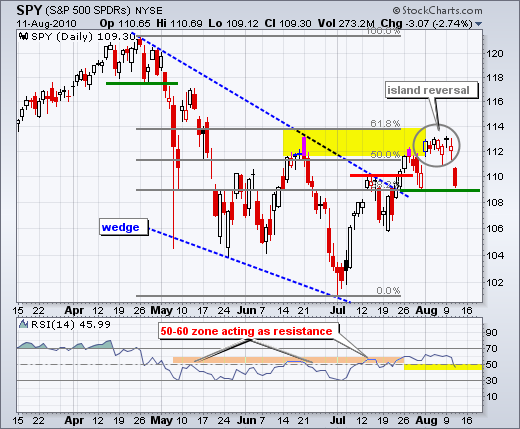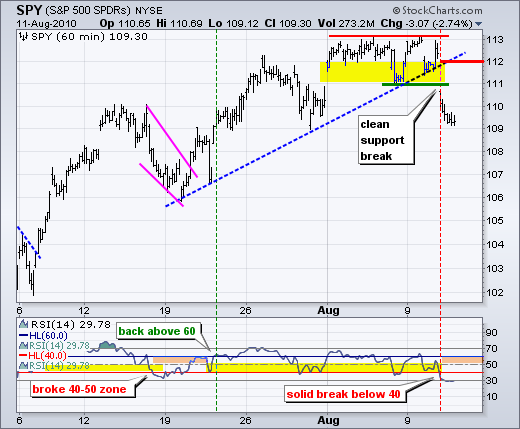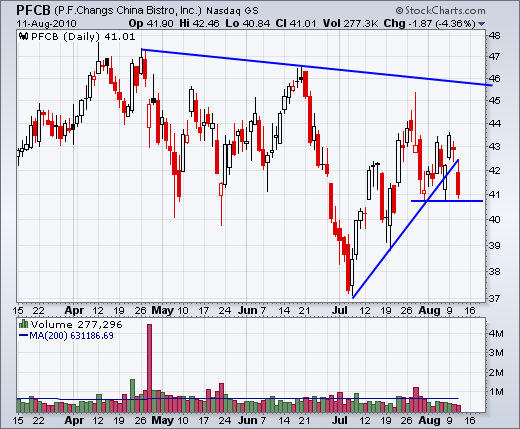With a gap up, tight consolidation and gap down, the S&P 500 ETF (SPY) formed an island reversal over the last two weeks. It all started with the gap and close above 112 on August 2nd. The ETF traded between 111 and 113 the next six days and then opened below 111 on Wednesday. Technically, the ETF has yet to break below support at 109 to fully negate the late July wedge breakout. For now, this big gap and sharp decline are bearish until proven otherwise. A close above 112 is needed to fill the gap.


On the 60-minute chart, SPY clearly broke support and RSI clearly broke below 40 to turn the short-term trend bearish. The ETF is down over 3% from this week's high and already a little short-term oversold. Broken support around 111 turns into the first resistance level to watch. There could be a throwback or we could see a flat consolidation before continuing lower. I will set key resistance at 112 and RSI resistance at 60. Both levels need to be broken to put the bulls back in the driver's seat.

Key Economic Reports:
Thu - Aug 12 - 08:30 - Initial Claims
Fri - Aug 13 - 08:30 - CPI
Fri - Aug 13 - 08:30 - Retail Sales
Fri - Aug 13 - 09:55 - Michigan Sentiment
Fri - Aug 13 - 10:00 - Business Inventories
Charts of Interest: CERN, CIEN, KSS, PFCB, UNG





This commentary and charts-of-interest are designed to stimulate thinking. This analysis is not a recommendation to buy, sell, hold or sell short any security (stock ETF or otherwise). We all need to think for ourselves when it comes to trading our own accounts. First, it is the only way to really learn. Second, we are the only ones responsible for our decisions. Think of these charts as food for further analysis. Before making a trade, it is important to have a plan. Plan the trade and trade the plan. Among other things, this includes setting a trigger level, a target area and a stop-loss level. It is also important to plan for three possible price movements: advance, decline or sideways. Have a plan for all three scenarios BEFORE making the trade. Consider possible holding times. And finally, look at overall market conditions and sector/industry performance.

About the author:
Arthur Hill, CMT, is the Chief Technical Strategist at TrendInvestorPro.com. Focusing predominantly on US equities and ETFs, his systematic approach of identifying trend, finding signals within the trend, and setting key price levels has made him an esteemed market technician. Arthur has written articles for numerous financial publications including Barrons and Stocks & Commodities Magazine. In addition to his Chartered Market Technician (CMT) designation, he holds an MBA from the Cass Business School at City University in London.
Learn More





